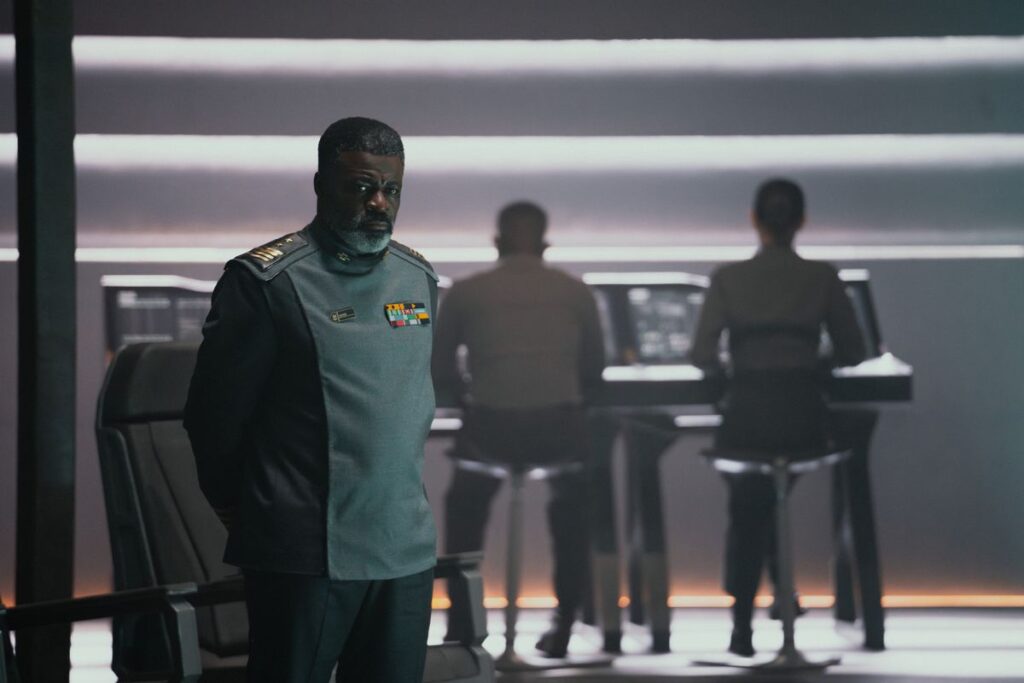The Halo TV show has always held the video game series’ lore at arm’s length. From its early announcement of the “Silver Timeline” (an entirely separate but loosely similar canon that the TV show would be sticking to) to the first season, which gives Master Chief a slightly different origin story, the Paramount Plus series has never been concerned with the things longtime Halo fans hold near and dear. But as the show’s second season gets into more recognizable territory, like the Fall of Reach, it’s still surprising to see how wildly it diverged from the games in its fourth episode.
[Ed. note: This story contains spoilers for the first four episodes of Halo season 2, as well as the entire Halo video game series.]
The Fall of Reach is one of the most important events in Halo’s video game canon. A war-defining victory for the Covenant, Reach’s destruction is also the catalyst for sending Master Chief on the Pillar of Autumn, the UNSC ship that would eventually crash-land on the very first Halo ring that humanity would discover. It’s also the basis for the game Halo: Reach, a particular fan favorite.
The Halo TV show’s version of the Covenant’s attack on Reach happens — almost entirely out of nowhere — in the second season’s fourth episode. The UNSC (who seem to be more the show’s villains than the actual Covenant) had seemingly known that an attack was possible for weeks, but did nothing about it. This leaves Master Chief and his fellow Marines and Spartans completely blindsided, fighting through the streets without their armor. In all, it’s a deeply silly setup for a better-than-average episode of Halo — in fact, maybe the most fun episode the series has had so far.
But after all the dust settles and the battle for Reach is clearly doomed, the strangest part of the episode remains how it handles Captain Jacob Keyes: by killing him off in a fairly silly “forgot to unplug the ship” incident.
Photo: Adrienn Szabo/Paramount Plus
If you’re a longtime fan of the Halo games, there’s a good chance you remember Captain Keyes as one of the series’ earliest interesting characters. His only major role is in the first game, and he clearly wasn’t built for the complicated lore and mythology the series would eventually employ. But for the story the original Halo was telling back in 2001, Captain Keyes was pretty neat: A grizzled leader in a doomed army, Keyes holds the crew of the Pillar of Autumn together when they crash-land on the Halo ring. But even more importantly, when the Flood reveal themselves, he sacrifices himself in hopes of saving humanity from the horrors of this parasitic, universe-killing race. It’s a classic ’80s and ’90s action movie archetype, but for the frothy sci-fi alien-shooting story that Halo told, it felt pitch-perfect.
The TV show version is a lot more complicated, and a lot less interesting. In an effort to focus on the backstory of Master Chief, the show’s first season flattens Keyes into a mostly utilitarian antagonist, another cog in the bureaucratic machine that kidnapped children to be soldiers for reasons the show never quite addresses. By the time all these plotlines happen in the video game lore, Keyes is remorseful for his actions, but too deep in the Covenant war to do anything but press on. In the show, he doesn’t seem exceptionally remorseful and the Covenant, as always, feels more like an afterthought than a genuine threat.
None of this is technically a massive problem, especially considering it’s a long way down the show’s laundry list of issues, but it is yet another way for Paramount Plus’ show to disappoint fans of the games. Captain Keyes is a complicated figure in Halo lore, particularly once the books give him a backstory, but in the context of the first Halo game, it’s still a much better story than the show has managed to tell across its 12-ish hours so far. He was a neat side character and a beacon of humanity’s selflessness in the face of the Flood’s overwhelming terror.
In the show, all that disappears so he can die unplugging the fuel line to a spaceship that he could have readied weeks ago, all to save a random Marine that Master Chief may or may not have the hots for. Man, this show is still such a disaster.

